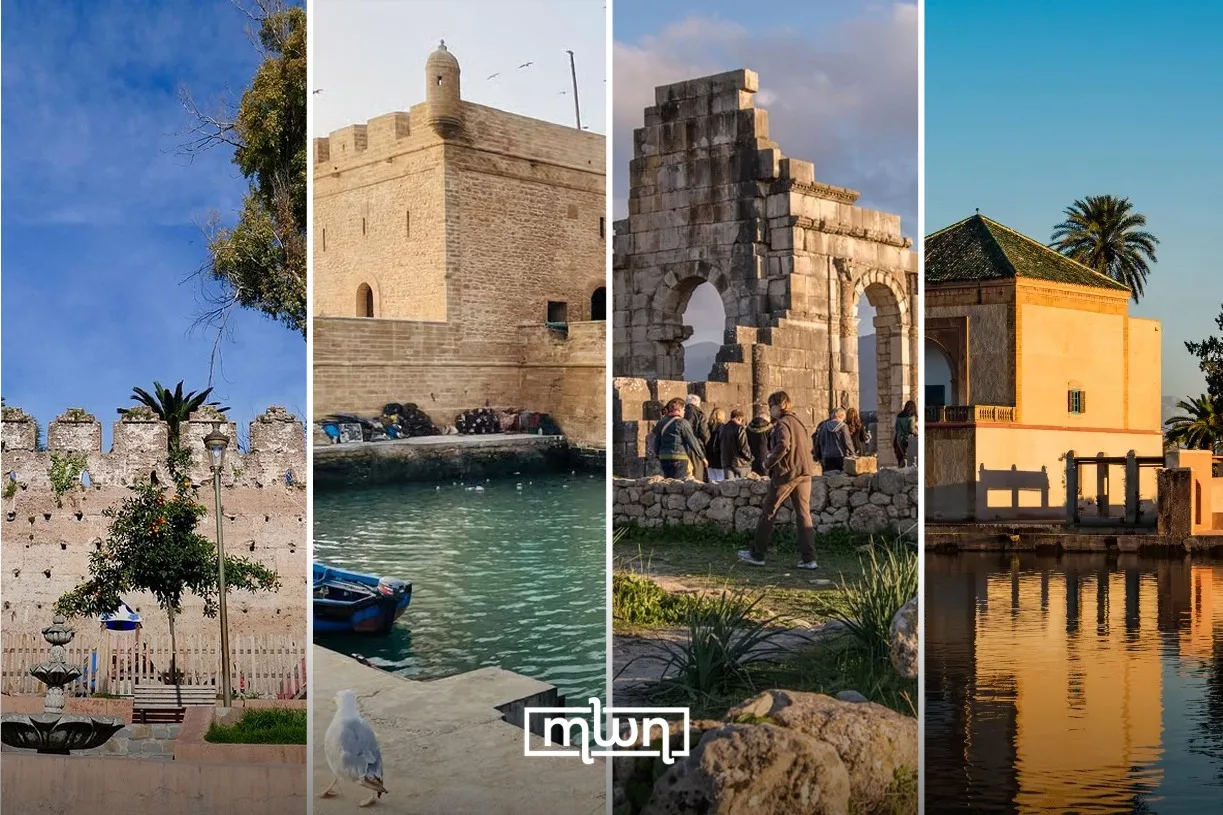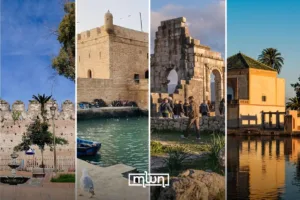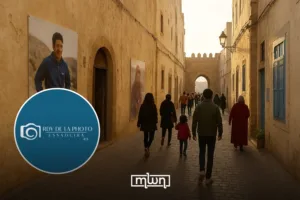Fez — Morocco will introduce café-restaurants inside a dozen historic sites as part of a new push to pair gastronomy with cultural tourism. The program opens a national call for projects to install Moroccan-cuisine concepts at 12 emblematic locations, from Roman cities to coastal fortifications.
Authorities say the goal is to deliver immersive visitor experiences while respecting each site’s architectural integrity and historical value.
The application window runs from November 14 to December 15 at 4:00 p.m., with funding disbursed in two tranches of 50% upon contract signature and 50% at opening.
Twelve sites, one culinary vision
The targeted sites span the country’s best-known heritage assets: Lixus (Larache), Volubilis (near Meknes), the Menara Pavilion (Marrakech), the ruins of El Badi Palace (Marrakech), Villa Perdicaris (Tangier), the Sqala (Essaouira), the Kasbah of Chefchaouen, Sidi El Mendri monument (Tetouan), Borj Cheikh Ahmed (Fez), the prehistoric site of Sidi Abderrahmane (Casablanca), the historic silos of Marrakech, and Borj Dmoua (Sale).
The selection, first detailed in local coverage, anchors the culinary rollout in places that already draw steady cultural footfall.
Underpinning the plan is a broader “incubation and support” track run by SMIT with the Ministry of Culture, Youth, and Communication to stimulate culinary innovation, attract creative operators, and strengthen Morocco’s positioning as a cultural-culinary destination.
The ministry’s notice frames the cafes as a way to “valorize Moroccan gastronomy” inside cultural venues while enriching the overall visitor journey.
Funding, timeline, and safeguards
Project owners approved for support can receive up to MAD 400,000 in public aid but must complete the remaining investment.
Organizers emphasize that operating models should be commercially viable, locally rooted, and aligned with site-specific constraints.
Safeguards are central. Design briefs call for preserving façades, arches, vaults, and other historic elements; avoiding visual clutter; using appropriate materials and reversible fittings; and securing prior validations from the competent heritage authorities. The state of conservation at each location will guide the level and type of intervention.
Sector watchers say anchoring food and beverage offerings inside heritage circuits can extend dwell time, diversify revenue, and create quality jobs while nudging visitors to less-traveled areas.
By concentrating on Moroccan gastronomy, authorities are also tapping into sustained demand from international travelers for authentic, place-based food experiences woven into cultural discovery.
The call is part of a steady cadence of tourism-culture crossovers aimed at raising standards and expanding the range of experiences in the run-up to a decade of major events and rising arrivals.
SMIT and the Ministry of Culture, Youth, and Communication have published the call and application materials online. Eligible proponents have until December 15 at 4:00 p.m. to submit dossiers; selections will focus on concept quality, feasibility, and fit with each heritage site’s character.
















